The Apple iPad 2 Review
by Brian Klug, Anand Lal Shimpi & Vivek Gowri on March 19, 2011 8:01 PM ESTThe iPad 2
We've already gone over the iPad 2's design in our preview so I won't spend a ton of time here. The first iPad was a pain to hold in your hand, the iPad 2 largely addresses that problem. The device is similarly sized to its predecessor but Apple removed significant volume by tapering the edges of the iPad 2. The tablet is thus more comfortable to hold, lighter and is significantly thinner than its predecessor. Apple likes to point out that the iPad 2 is now thinner than even the iPhone 4.
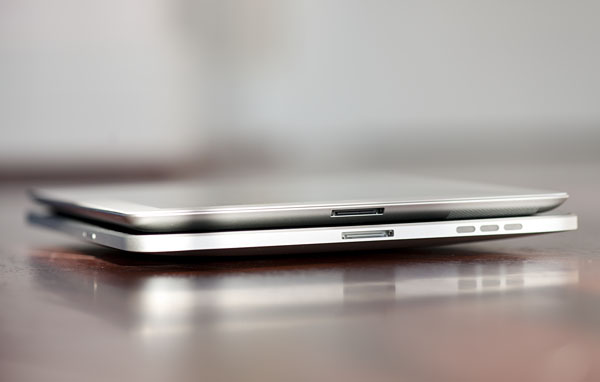
Apple iPad 2 (top), Apple iPad (bottom)
The Xoom to me was more pleasant to hold that the original iPad, however the iPad 2 takes the crown back from Motorola. I believe we'll see second generation Android tablets that rival the iPad 2's thickness but for now you have to keep in mind that we're comparing a second generation iOS tablet to first generation Android tablets. With smartphone internals and virtually nonexistent cooling requirements, building a thin tablet isn't an impossible task.
The front of the iPad 2 is pretty much unchanged from the original, with the exception of the new VGA front facing camera (720p rear camera). As we'll get to shortly, beneath the front of the iPad 2 are a number of magnets for use with Apple's new smart covers. The front bezel of the iPad 2 is available in both white and black. Surprisingly all of the AnandTech editors who contributed to this review opted for the white and all of us seemed to actually be pretty happy with the choice.
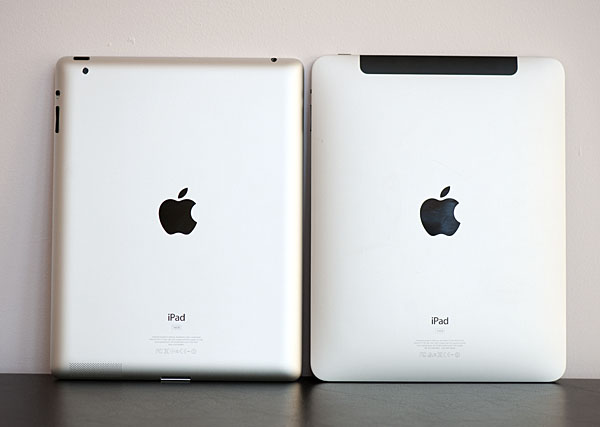
Apple iPad 2 (left), Apple iPad (right)
Flip the iPad 2 around and the back is a very familiar aluminum. Unfortunately with no protection back here you'll often find yourself laying the iPad 2 face down on a smart cover when it's not in use. Even on a clean desk I could hear tons of little particles grinding up against the aluminum. So far the iPad 2 has been pretty resilient, implying that it's made of a harder aluminum than what Apple uses in the MacBook Pro line. That being said, I still worry about scratching the back of the device. Apple makes beautiful products but their beauty isn't always durable.
The button setup hasn't changed since the original iPad. There's the familiar home button on the front (which feels a little softer than the original, but in a good way) and power/lock button up top.
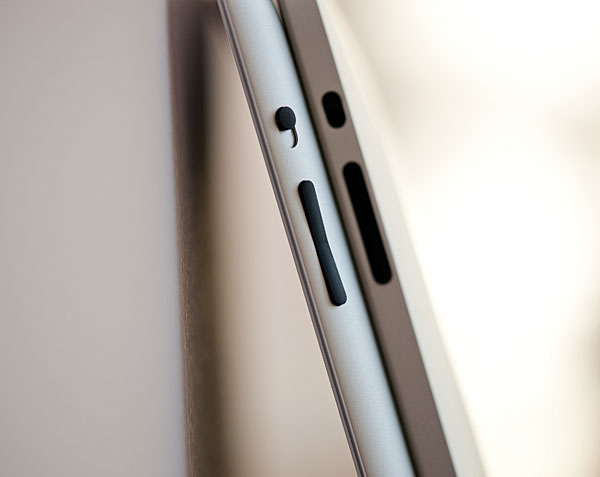
Apple iPad 2 (left), Apple iPad (right)
Along the right side are the mute/rotation switch and the volume rocker. The ends of the volume rocker protrude out further in the iPad 2 than they did with the original - yet another welcome change.
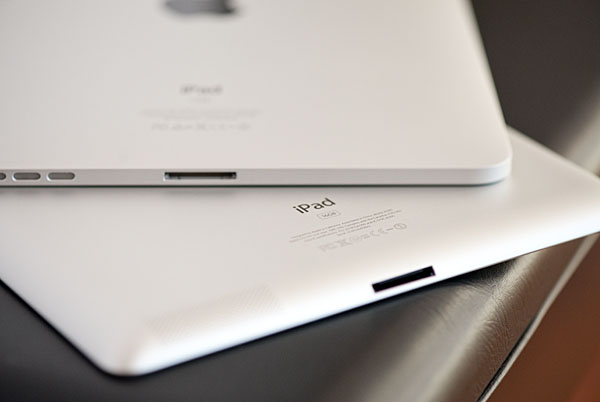
Apple iPad 2 (bottom), Apple iPad (top)
The dock connector is arguably the biggest flaw in the design. Because of the angled edges of the new iPad, the dock connector actually finds itself located in the middle of a slope. As a result inserting a standard dock cable is a bit awkward. On the original iPad you could just line up the cable with the middle of the bottom edge and sneak it in, on the iPad 2 there's more of a guessing game - usually involving me scraping the cable side dock connector against the aluminum back looking for the mate.
Just like last time the iPad 2 is available in both WiFi and 3G versions. The 3G versions add A-GPS support will the WiFi version can only pinpoint your location using WiFi trilateration. Apple offers separate AT&T and Verizon editions of the iPad 2, both of which have the same black antenna bar along the top of the back face of the tablet.
| Apple iPad 2 Pricing Comparison | |||||
| 16GB | 32GB | 64GB | |||
| WiFi | $499 | $599 | $699 | ||
| AT&T 3G | $629 | $729 | $829 | ||
| Verizon 3G | $629 | $729 | $829 | ||
NAND capacities haven't increased, nor have prices. We likely won't see an increase in storage capacity until 25nm NAND ships in greater volume. The iPad 3 will probably start at 32GB and go all the way up to 128GB as a result.
Regardless of carrier, the 3G models require a $130 premium over the WiFi only models. Personally I'd say that some sort of cellular data connectivity is really necessary to make the iPad 2 as useful as possible. Whether that comes from a 3G model or through a MiFi/smartphone hotspot doesn't really matter.
The pricing as a whole is still absurd. Even if you opt for the $499 WiFi version you'll be out another $39 for a case, plus another $39 if you want the HDMI adapter and then there are all of the apps you will likely start buying. This is an expensive platform to buy into and rest assured that there will be an even faster version out next year. Apple hasn't had much pricing pressure from the competition, however as we mentioned in our CES 2011 coverage - ASUS will be shipping a $399 Honeycomb tablet this year that should start to change that.


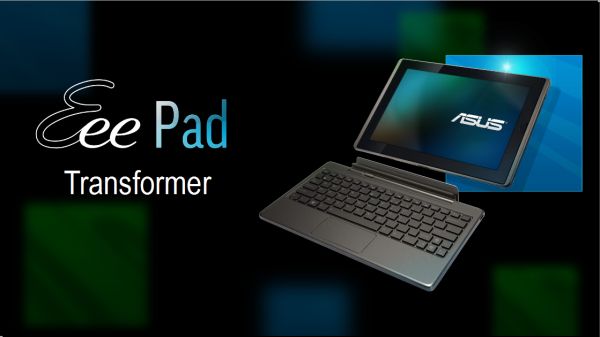








189 Comments
View All Comments
TareX - Sunday, March 20, 2011 - link
Irrelevant, but is Anandtech gonna do an Atrix review?name99 - Sunday, March 20, 2011 - link
"The Digital AV adapter is a bit clunky and I believe the future of this is clearly in some form of wireless transmission, but for now it plugs directly into the dock connector. "You mean the wireless transmission that ALREADY EXISTS called AirPlay?
Apple HAVE a solution to your hatred of wires. You seem to be upset that they don't have a solution that somehow magically transports video from iPad to your (HDMI and nothing else) TV using some non-existent wireless standard that isn't actually built into your TV.
It's fine to be frustrated at some of the idiocies in tech, but it's truly silly to complain about this one. Apple provides this cable for one, and only one, group of users --- people who actually NEED that physical wire.
BlendMe - Sunday, March 20, 2011 - link
AirPlay doesn't mirror tha iPads screen, it only allows you to stream content. For now. And for AirPlay you need an Apple TV or another AirPlay enabled device. The HDMI adapter allows you to hook it up to almost any recent TV, monitor or beamer.ananduser - Sunday, March 20, 2011 - link
In fact there is a standard already built in in most modern(emphasis on modern) TVs. It is called DLNA. Unfortunately Apple decided that coercing you into using their ecosystem ONLY is the way to go. Personally I find Apple's modus operandi of not giving 2 sh*ts about other 3rd party solutions one of the "idiocies in tech" as you well put it.Regardless, the iPad2(or 1) is a cool gadget(emphasis on gadget) nonetheless. Combined with leading parental controls as:no flash(as a porn enabler), no porn(appstore policy), no bloody/gory games(appstore policy) and a damn spartan simple and fast GUI makes it a great basic computing device for the naive crowd(parents, grandparents etc.). IMO it really shines for children as their 1st computing platform.
That it is also a frequent choice for the tech literate few, good on them... it still is best suited, IMO, for those of the above.
name99 - Sunday, March 20, 2011 - link
Can both of you not read?I was referring to, as I quoted, "The Digital AV adapter is a bit clunky and I believe the future of this is clearly in some form of wireless transmission, but for now it plugs directly into the dock connector. "
How do either of your comments have any relevance to that?
If you want Wifi, you need something that accepts a Wifi signal. Your TV doesn't have Wifi built in, so, yeah, you need some other box.
And DLNA? Really? You want to go there? Go explore the DLNA web pages (http://www.dlna.org/products is a good start) and tell me this pile of turds is EVER going to be relevant to the real world. For god's sake, man, get in touch with the real world. Compare that web page and everything it implies about compatibility nightmares and technobabble with the Apple TV web page.
Anand Lal Shimpi - Monday, March 21, 2011 - link
AirPlay is really for specific content at this point. I'm referring to the future of video out on tablets in general. And I didn't mention it as a knock against the iPad today, just a heads up that in some future version of the iPad you won't need a physical adapter (at least not on your tablet). When you have full wireless display mirroring then you can start introducing more interesting usage models - e.g. tablet as a desktop replacement, tablet as a game console, etc... You can do these things without wireless display but they are definitely enhanced by it being there.Take care,
Anand
Ushio01 - Sunday, March 20, 2011 - link
When ifixit did there teardown of the first ipad it was shown that apart from the battery and the antennas all the other components were kept up the top so why can't a tablet simply be a dock you slot a smartphone in that supplies a larger screen and additional battery's?That to me is a far more appealing device than current tablets.
kmmatney - Monday, March 21, 2011 - link
makes sense to me. I can't see Apple doing this, but maybe on of the Android makers can come up with something along these lines. I'd love to be able to pop my phone into the back of a tablet and use the bigger screen. I'd just keep it near the couch.zmatt - Sunday, March 20, 2011 - link
I still hold that the entire market segment (not just the iPad) is a solution looking for a problem. The idea seems cool but in reality nobody was asking for the tablet. And after using them I still can't see what the attractiveness is other than people buying them cause they are "cool". I take calls and get mobile updates on my Galaxy S, which is more than competent enough for light work such as taking down notes or answering emails on the go. Any real work I do with a computer. I'm sorry but you can't make up for the lack of performance and a real keyboard if you are talking about getting work done. The iPad may be nice for mobile entertainment, but if i already have an mp3 player and a laptop what can it do that they can't? For tablets to be viable productivity devices and not just toys i think they would basically have to evolve into laptops. So again i ask, what's the point?cucurigu - Sunday, March 20, 2011 - link
Thanks a lot for your review, Anand, Brian and Vivek - I was waiting for your opinion on the iPad 2 as it was a gadget most appealing but, as you said, very polarizing for the reviewers.There is something I didn't really understand, even after rereading the Xoom review - both you (Anand and Brian) said the first iPad wasn't your cup of tea in the long run and chances are the new one won't change this (but you're giving it another go). The general impression (one which I also got while looking at the tablet segment) is characterized by their unclear niche - where do they really fit ?
If I understand correctly the first tablet (ipad) didn't integrate with your workflow and the reasons seem to apply to all tablets, however, this sentiment doesn't come off so clearly from the Xoom article - so I wondered : did you have the impression the Android OS was more adequate to your usage patterns ? Meaning, if the Xoom and iPad 2 where left on your desk, which one would you choose to take with you, and for which purpose ?
Once again, thanks and best regards !